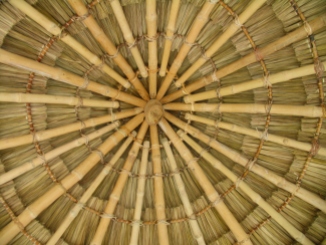When I decided that I would start a foundation and buildings would have to be erected, I went to meet Francisco ‘Bobby’ Mañosa, the architect of the beautiful Coconut Palace in Manila. Mr. Mañosa had devoted his life’s work to creating a Filipino identity in architecture.
I discussed my idea of a farm with bamboo buildings where boys, who lived in the streets, could see how beautiful life in the province could be. The province (countryside) would be such a change from life living in the streets of Manila. ‘Bobby’ thought my idea was great and with boys learning construction using the local bamboo, taught by local workers and that it would be a win-win situation. So, with his blessing I decided that we would have buildings made out of local materials. I had no idea what I was letting myself into.
I have made a timeline of what I was doing in construction, maintenance and farming. It is not complete but I intend to keep going through all my photographs and making it complete.
It is important that this website gets released – finished or not. Cullen must be stopped from maligning other people and hurting children.
2004
I needed somewhere for Joseph Mariano to live as he was too ill to return to his own home. Joseph was taken care of in a tiny house I had already transformed in the barangay (village). He would live there until I had something built for him and his caretaker, Myra and her husband to live. Other young children from the Aeta village stayed with him and we had lots of visitors. I was living in Makati most of the time and returned to the village, weekly, to see the progress.
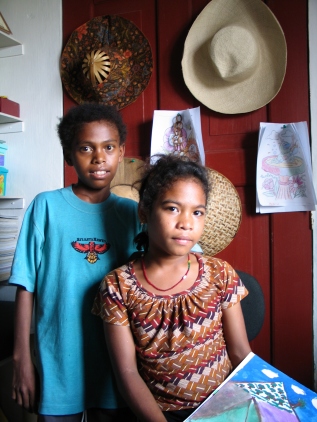


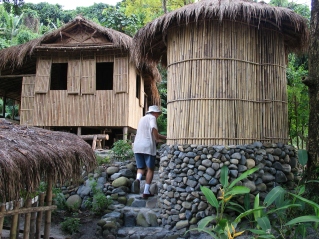
Construction projects were:
- Built a piggery
- Recropped the irrigation canal with riverstone so the volcanic ash would not get washed out.
- Built a bahay kubo (traditional bamboo hut) for Joseph and his caretaker
- Dug a septic tank to accommodate the waste from the CR (comfort room). I used an idea I got from the internet called VIP latrine. It was brilliant, no flies and no door.


The irrigation canal was dug, by hand, not only through the farm but through our neighbor’s land so they could have water. This was the year that I learned what the river would do during rainy season, it was a bit frightening. The water in the irrigation canal is coming from a mountain beside us, not from river. The National Irrigation Authority joined my work to the river access which had been buried under 16ft of volcanic ash since the eruption of Mt. Pinatubo in 1991. At last the rice farmers in the village could plant rice twice a year instead of only during rainy season.
I left the Philippines on September 12th to return to the States. I had to put my house on the market, sell nearly everything I owned and pack what I thought would be useful in the Philippines.
2005
I returned early in January and immediately had a party for all the friends I had missed. It was an extremely busy year but we had pigs in the piggery, fish in the pond.
- Excavated the area for what I planned to be the Visitors Center
- Built the ‘Visitor’s Center with surrounding porch. I had no idea it would eventually become the home to so many.
- Built the large kitchen which I felt would accommodate feeding lots of boys.
- Constructed an overhead cistern to hold water for laundry and dishes.
- Built a bodega (storage room) to hold my things arriving from the U.S,
- Erect a bamboo and plastic greenhouse to start lettuce in.
- Built three Bahay Kubos which were planned as traditional homes for 12 boys.
- Built the Gazebo.
- Had the Mayor send his equipment to move tons of volcanic ash to level the site.
- Laid out the farm and tested the seeds I had brought from the States.
- Re-cropped more of the irrigation canal.
- Re-cropped the gully that had been the route of the water during rainy season. It was deep, ugly and dangerous. We made it beautiful with river stones, plants and a little waterfall. The water from this fed into our fishpond.
I had no idea that the Visitors Center would become my home for so many years and the porch would become the ‘nursery.’ My staff made inquiries into getting electricity to the farm. We were told it would cost $10,000 so instead I used solar lights and lanterns. I had electricity put in in 2007 for a few hundred dollars.
-

Hand dug to a level clay footing
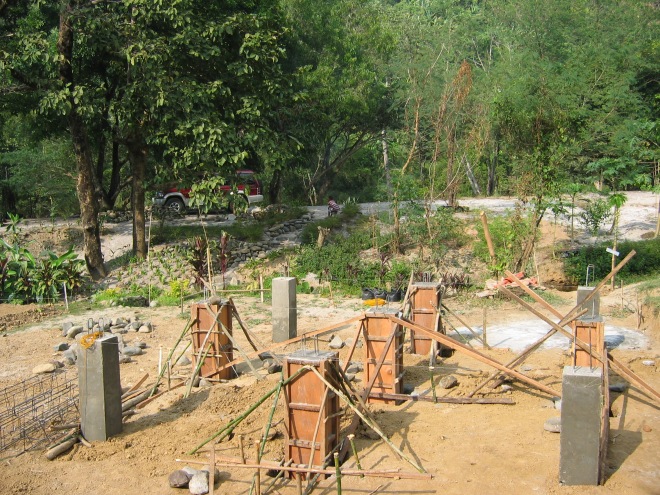
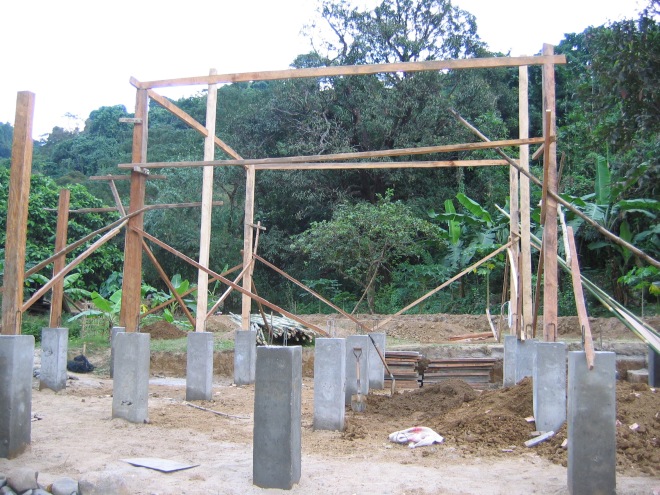

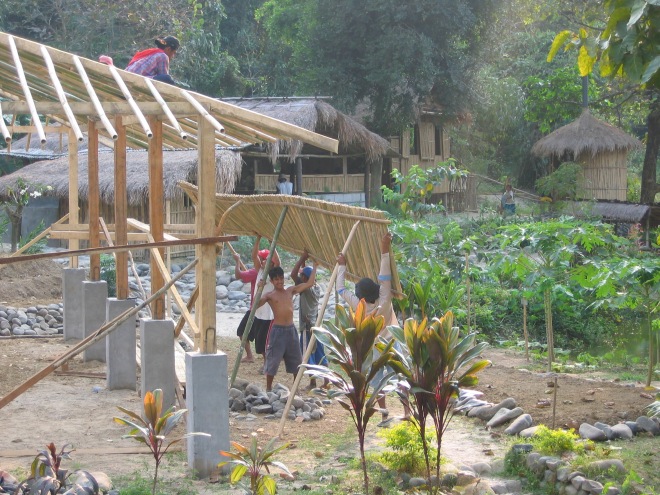


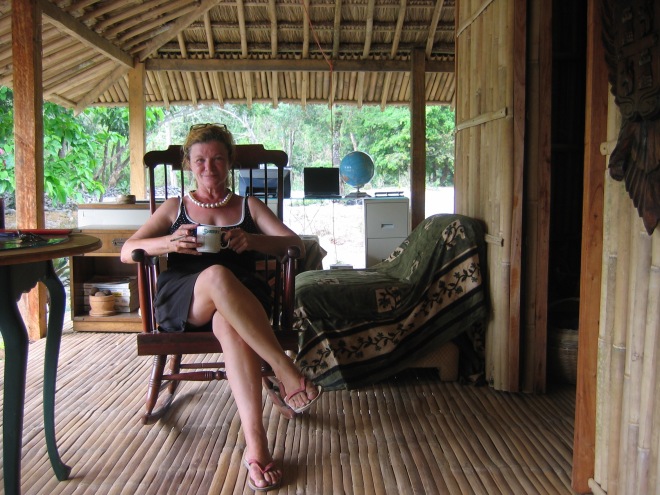


The men and I worked all day and all night to finish the counter in the kitchen. It would accommodate the food for the Mayor and visitors the following afternoon. I had chosen the date for the Groundbreaking Ceremony as October 12. It was the death anniversary of my son, Robert

The gazebo which I had designed on the upside down bottom of a bleach bottle. When you are working with men who are talented but have no idea what a gazebo is you had to use models. We made the pillars out of cement as I was quickly learning that using wood was not a great idea. The same with the 3 Bahay Kubos. The roof lasted for many years but was dismantled in 2013 after a nasty storm.
2006
This was the year that Baby Michael Clemente, my first infant, and a few other young children came to the farm. My reputation for taking care of people was getting known.
- Construction projects were:

The three Bahay Kubos with bamboo floors and porches. This would change in later years when cement floors and steps were put in. The bahay on the right would eventually have the walls removed and it made a great place for sick people coming for help. The fishpond was lined with river rock as I was learning about erosion during the rainy season. There are only two season in the Philippines – hot and dry and hot and wet. No Spring and no Fall.
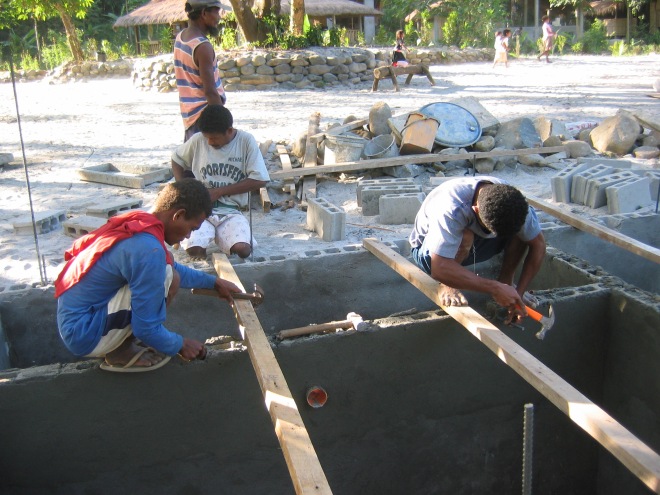
2007
In January we had a Medical Mission and I had many patients to take care of. The lettuce was growing and the little farm was doing well.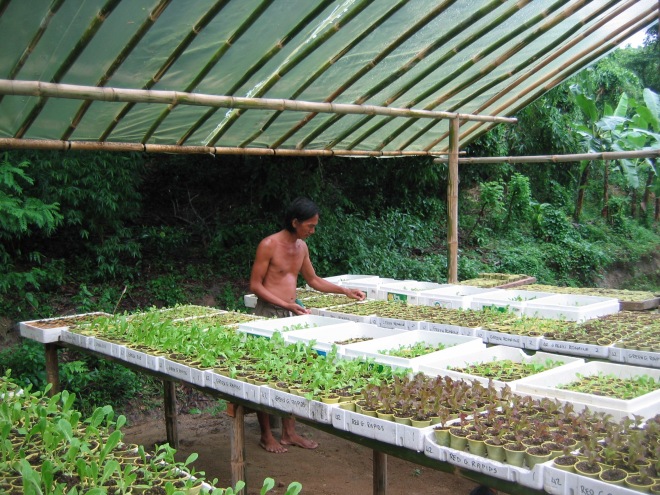
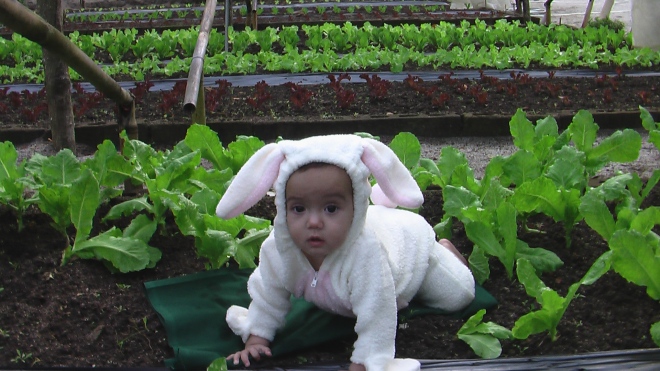

The Romans taught British people how to build roads that would not wash out. I learned that bit of information in primary school. So, it was simple for me to teach my men how to fix the road to the farm that was always washing out. There were some old culvert that had lain by the side of the road that led to the farm and they had been there for years.
The men dug a trench for them and I hauled them with my truck. I found the proper level of the road with a lump of string. With large rocks first, medium size next and the small ones last, filling it in all the time with volcanic ash, we made a road. The road was level and did not wash out. My men thought I was brilliant and I didn’t tell them any different.
It is unusual for a woman, in the Philippines to do any kind of construction and it very unusual for a foreign woman to become involved with construction. My men respected me and I respected them for their patience with me.
2008
- Christening for my Caretaker’s son, Mark John, named after my Father.
David Joseph arrived and his sisters arrived 3 weeks later. The porch was getting a bit crowded but we managed.
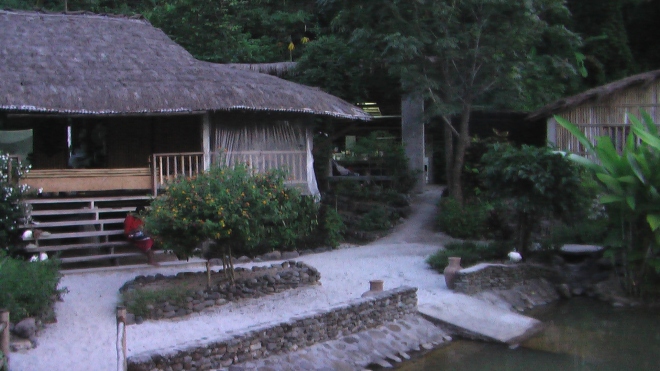



2009
- Medical mission.
- Christening for Catherine, Victoria, Angelina and David Joseph.
- A donation from Mr. Rick Abernathy and his wife, Catherine, to build an extension to the Visitors Center to accommodate four infants, was gratefully received.

This young lady, Sarah, was my first volunteer. She was wonderful and without her help I doubt I could have got so much done. I called her ‘The Prisoner of the Porch’ as that was where she stayed with 4 children while I worked with the men. I found out later that she had never changed a diaper in her life but she became very proficient. I missed her terribly when she left. Joseph Mariano was so fond of her he named his first daughter after her. A little Aeta girl with the name of Sarah.

I was very pleased to find out that Sarah had enjoyed her visit to me and she had told a friend about it. Carrie was to arrived later in the year and I was most fortunate when she said she would stay for 5 weeks. I felt so Blessed to have found two young women who believed in what I was doing. Carrie was very extremely helpful with patients and we had many long days together.


2010
A donation from my new friends in England was sufficient to start digging the Well, Water from this well provided our neighbors and the construction workers of the Preda Girl’s home. I had never dug a well before and neither had my workers but we managed to do it. This slideshow shows some of our work. It was extremely hot with the sun reflecting off the volcanic ash. The camera says 2008 as I had not known to set a date on a camera.
2011
Enclosed the left hand side of the porch which had received a tremendous amount of damage in a typhoon
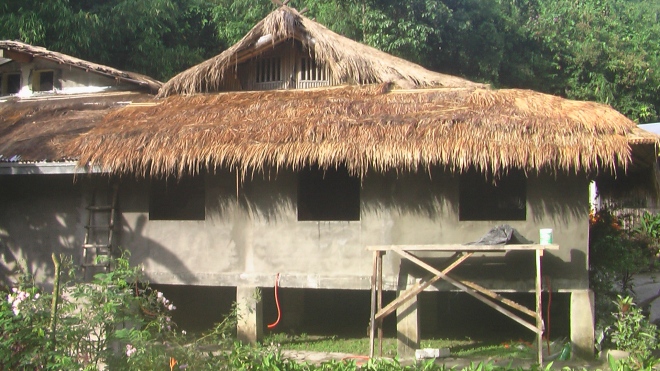
2013
An extremely busy year with patients. At one point I had 20 Aeta patients in the Gordon Hospital..all of them at the same time. This story is in Medical Missions, Patients and Christenings. I was fortunate enough to have a visit from American friends. Mary Malarri, who was one of the founders of the Hope Medical Mission, came with her niece, Mary Shaw. Without their help and advice it would have been quite difficult to manage.
- Built two more bahay Kubos to accommodate the tuberculosis patients who could not return to their home as they were still infectious.

This is one of the Kubos erected for the patients. Fresh air is important and the sides of this structure would be rolled down in the evening. The parallel bars were for patients to walk along to get their strength back or air their bedding. 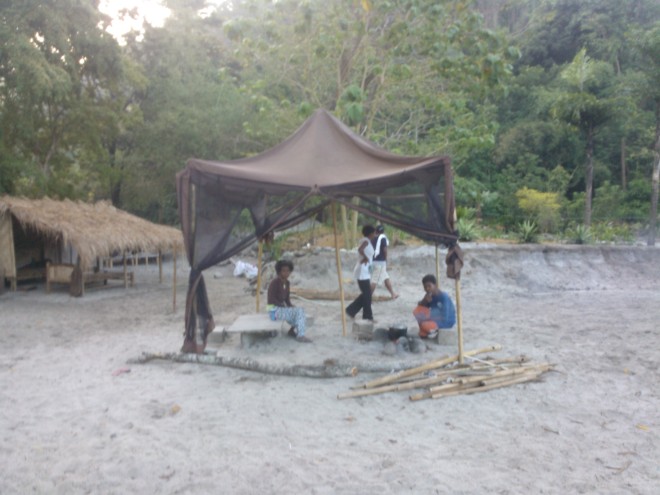
I had a shade put up over a fire. Traditionally, the Aeta will build a fire in their home but I could not allow that with and oxygen tank in one of the kubos. 
There was no electricity so far from my house so I provided solar lights which fascinated the sons of one of the patients.
Typhoon Ondoy hit in September 2013 followed by Yolanda in October 2013. Typhoon Yolanda was the typhoon that got so much media coverage. Typhoon Yolanda’s damage though for us was considerable and a lot of the damage was caused by not only a landslide but was compounded by the culvert bridge that Cullen had place over the river in many years before.
2014
As I have mentioned, previously, my cell/phone was taken from the farm on the day I was arrested. The 4 gigs of photographs and videos of the damage and the rebuilding of structures that were damaged are therefore unavailable.
From memory though:
- We had to drain the fishpond/paddling pool and we turned it into a sunken garden. It was beautiful. Trees that had come down had to be cut up and removed and given to workers to turn into charcoal.
- All of the bamboo in the roof of the main house was removed and replaced. There are only a few time in the year that kugon can or should be purchased but we were ready for the new grass roof.
- The greenhouse was moved from one side of the farm to the other.
- The front of the house had the bamboo walls and sliding bamboo doors removed and the space was expanded. Glass and metal door became the new entrance.
- Two little rooms were built at the front of the house, one on the left for David Joseph and his toys, books and clothes and one on the right for Catherine and Victoria. I believe that little boys and girls have their own private space.
- On the day I was arrested, my Mason, Kuya Patenio had arrived that morning to finish the front for me with the 20 bags of cement I had just picked up from the hardware store.
I was so excited that the job would get finished with the mason’s help. I am quite capable of doing construction and I did a lot but with three children to get ready for school, an infant and a child who needed constant watching it was becoming arduous.
I loved my home in the Shenandoah Valley but I sold it to allow me the funds to take care of those who could not take care of themselves. I was proud of the little farm and what I had been able to do with it.
Friends have told me that not only has the farm been ransacked and faucets, roofing, furniture, toys, hundreds of books and ornaments, etc., taken but the farm which was an organic little paradise is now the parking area for old trucks for the Mayor of Subic.
Hopefully, this webpage is enough to let you know that I was a capable woman who worked hard to make a beautiful home for the children I had the honor to take care of.











